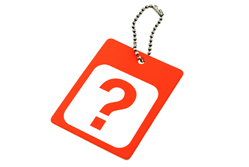Blog posts tagged pricing
What's it worth? How to price your technology product

Ben Dyer of SellerDeck has been keeping an eye on how IT firms price their products. And he thinks we could all learn something from them.
Technology companies have been responsible for some innovative pricing ideas. So, if you're struggling to price your product - whether it's technology-related or not - can you take some inspiration from them?
The three 'r's of pricing
Recurring revenue rocks. Working for a software company, I know all too well the challenge of selling items that are one-off purchases. The upside is an injection of hard cash. The downside is that your sales team has to convert a fresh batch of prospects, every month.
One alternative is to aim for recurring revenue with a subscription model. You can charge a monthly fee to people who use your software, offer bolt-on extras like support and upgrades. Customers like this pricing model because the monthly cost is low, and it gives you the ability to predict the growth (or decline) of your business.
Give it away
Another option is to give your product away. This sounds mad, but can lead to huge growth.
It's called the 'freemium model'. The idea is to get people using a basic version of your service, then upsell more advanced features.
The freemium model only really works if your product has tiered levels and it doesn't cost you much to set up a new customer. It's a science all to itself - I recommend checking out Chris Anderson's blog and excellent books, Free and The Long Tail.
Two companies, two different approaches
Apple and Amazon both have numerous divisions, products and services. They also have completely different pricing strategies.
At the recent iPad 2 launch, Apple's Steve Jobs revealed that the company now makes more money from 'post-PC' purchases (iPods, iPhones, iPads) than from its traditional computers. One reason for this is the rise of third-party apps which run on Apple devices. Apple takes a slice of each one sold.
Apple has successfully blended the upfront payment and recurring service models. I would argue theirs is the best example of this type of pricing on the market. Most impressively, Apple has even managed to keep the initial payment high!
Amazon has taken a different approach with the Kindle, its electronic book reader. These come in two parts: the software, which is free for almost all platforms (including the iPad), and the hardware.
The hardware is cheap. At just £111 the price is getting close to impulse-buy territory. Many observers reckon the Kindle will be free to Amazon Prime subscribers by the end of the year.
The rationale, of course, is that most of Amazon's Kindle revenue comes from selling ebooks for people to read on the device. That's the company's fastest growing product range.
Amazon has been smart and reactive. The Kindle isn't a rival to iPods and iPads. It's complementary - so Amazon can grow its revenue too.
What could you learn from IT companies about pricing?



